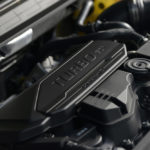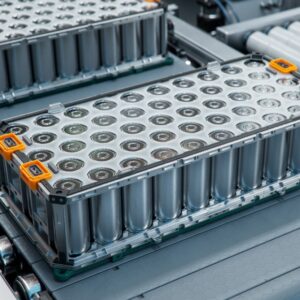Many electric vehicle (EV) advancements have occurred in the past decade. They gave way to better batteries, faster charging, and lower production costs.
Engineers from the University of Michigan (UM) have made another breakthrough that aims to resolve one of EV’s biggest pain points: EV batteries in cold temperatures have poor charge time and battery health retention.
Cold temperatures slow down the chemical reactions in the battery, preventing the battery from charging or discharging at an efficient rate. As a result, charging EVs in the cold takes much longer. At the same time, batteries tend to wear out more when they operate in cold environments because of the inefficient chemical processes.
To compensate for these weaknesses, some EVs have built-in systems that warm up the battery during use. It’s recommended that drivers let an EV’s battery warm up before driving it on a cold winter day. Otherwise, the battery will have a shorter lifespan.
University of Michigan’s Breakthrough
The breakthrough adds a new specialized coating around the battery’s outer layer, which prevents lithium plating from occurring.
This plating refers to the buildup of metallic lithium on the surface of the battery’s anode. This unwanted metallic layer disrupts the battery’s process of transferring lithium ions into the anode.
Lithium plating reduces the amount of energy stored, slows down charging, and makes batteries more dangerous, leading to fires or even explosions. This metallic crust forms when the battery is stressed, such as when it’s being fast-charged, kept at a high state of charge, or used in cold temperatures.
At what temperature does an EV battery degrade? Generally, it degrades when exposed to temperatures outside their ideal operating range.
Batteries operate most efficiently at around 60° to 95° F. According to research, the best temperature for EV batteries is around 70°F. This is the temperature where batteries operate most efficiently.
What Is UM’s Special Coating?
A 20-nanometer-thick lithium borate-carbonate coating is added to the battery. Additionally, the electrode is restructured with the team’s laser-patterned architecture.
With these two advancements, lithium-ion batteries can charge faster and maintain the battery’s maximum charge capacity for more charge cycles.
Benefits of UM’s Breakthrough
Lithium-ion EV batteries made with the special coating can charge 500% faster at temperatures as low as 14°F. Previously, charging an EV took 30 to 40 minutes, even with fast charging. With this new technology, a battery can take less than 10 minutes to charge.
It seems that it will take some time before this latest breakthrough finds itself in production vehicles. However, the UM team believes battery manufacturers wouldn’t need to completely overhaul their production processes to incorporate this new technology.
Many consumers still aren’t fully convinced about buying EVs because of concerns about EV range, charging times, infrastructure, and battery replacement. However, this innovation might lessen those concerns and make the EV a more attractive proposition to the mass market.
Any information provided on this Website is for informational purposes only and is not intended to replace consultation with a professional mechanic. The accuracy and timeliness of the information may change from the time of publication.




















